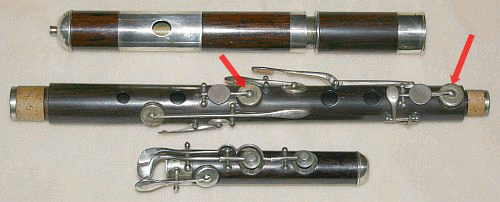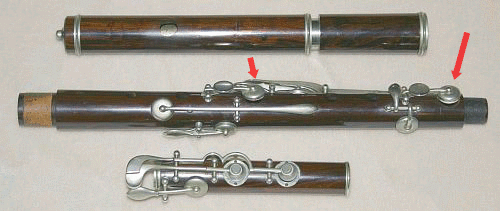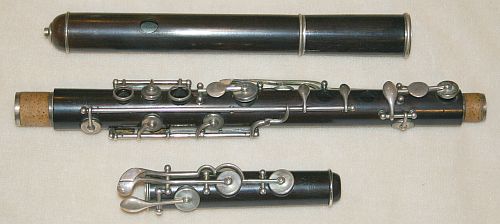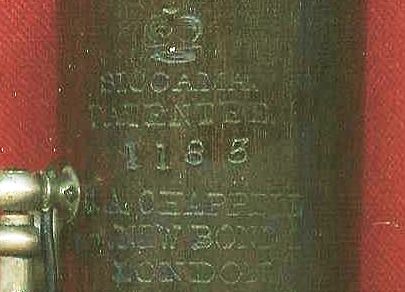

Abel Siccama (c1810–c1865) was a language teacher and amateur flutist. In large part as a reaction to the introduction of the conical Boehm flute of 1832, he proposed several models of flutes, by far the most popular of which was his "diatonic flute" (which we call simply the Siccama flute) of 1842. This was manufactured in London by several makers and taken up by the important London flutists Pratten and Richardson.
The Siccama flute in its simplest form has 10 keys. In addition to the keys of the standard 8-key flute, it has two open-standing keys that cover what would be the 3rd and 6th finger holes of a simple system flute.
The holes are relatively large, relatively uniform in size, and have been moved to positions close to their accoustically correct locations. In particular, the A and E holes have been moved further down the tube and can no longer be reach by the unaided third fingers of the left and right hands, so the open-standing keys are provided.
Here are photos of Siccama flutes by T. Cottier (c.1860) and W. A. Pond (c.1880), respectively, both of New York.


The basic fingering of the Siccama flute is the same as the simple system flute in the first two octaves, but differs in the third. The large holes give the flute a relatively powerful sound, and the instrument is much more even than a large-holed 8-key flute. It is a significant improvement in many ways.
But the player loses contact with two holes and so loses some of the ability to do effects like finger vibrato, glides, half holing or leaking. (Those who did not appreciate these effects would not have considered this a loss.) One cannot use many of the alternate fingerings in use on simple system flutes, though harmonics work well enough. I personally don't like the sound of the trills using the open-standing keys as much as those made by fingers.
Here is a close-up of the Cottier, with my suggestions as to where to put your left hand fingers.

There were more elaborate types of Siccama flutes. The one below is by S. A. Chappell (London, c.1880).


The flute has ring keys (brille) for holes 1 and 2 to improve C and C#.

And a C key for the left thumb under the flute along with the Bb key.

